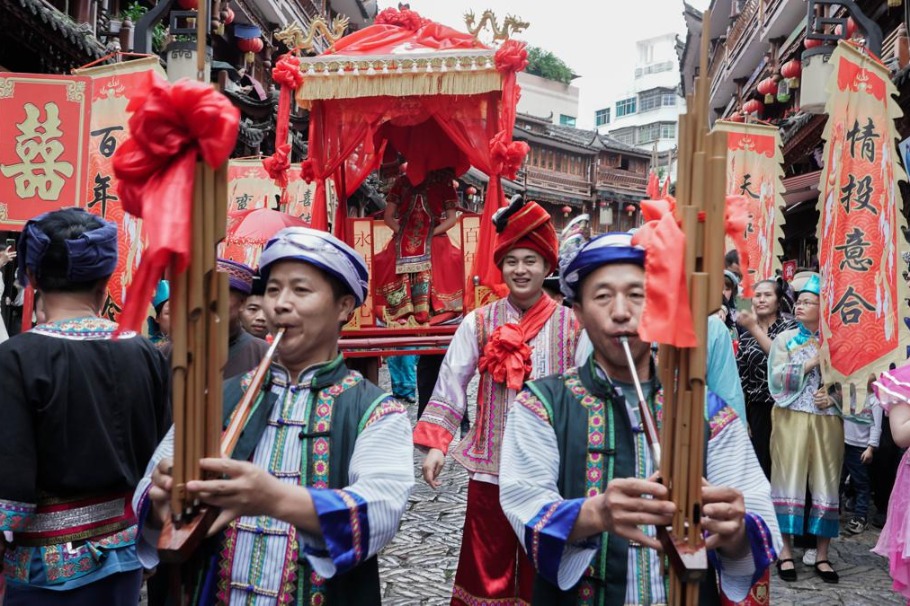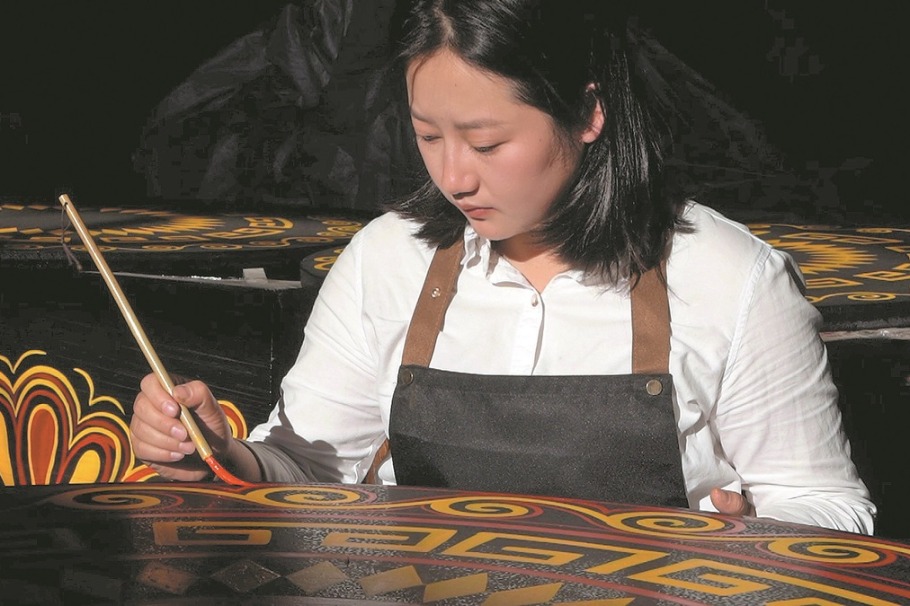Central COVID-19 group leaves Hubei


The central government group overseeing the COVID-19 epidemic response in Hubei province concluded its mission and returned to Beijing on Monday after three months of work in the hardest-hit region in China.
The special task force led by Vice-Premier Sun Chunlan, consisting of officials from various government departments under the State Council and senior medical experts, left Wuhan, the provincial capital, as epidemic prevention and control efforts in the province have transitioned from emergency response to regular work.
The officials' departure from Hubei also took place at a time when no new confirmed infections have been reported over the past four weeks in Hubei. The last 12 patients were discharged from hospitals in Wuhan after they recovered on Sunday.
The work group was established as a result of a decision by the Standing Committee of the Political Bureau of the Communist Party of China Central Committee at a meeting presided over by Xi Jinping, general secretary of the CPC Central Committee, on Jan 25.
At that meeting, the top Party leadership decided to set up a central leading group on the epidemic response headed by Premier Li Keqiang and also to send a central government group to Hubei to help the local government and people fight the contagion. Two days later, Sun led the central government group to Wuhan, the hardest-hit city in China, where it remained until Monday.
The group arrived at a critical time, when medical facilities in Wuhan were overstretched as huge numbers of patients there flocked to hospitals.
Healthcare facilities were struggling to protect medical workers from being exposed to the virus, and many of them said they were running short of personal protective equipment.
While working in Wuhan, the group also visited other cities in the province, such as Huanggang and Xiaogan, to coordinate epidemic prevention and control work.
Keeping its responsibilities for directing and overseeing the efforts, the group worked with local officials and residents to race against time to strengthen anti-epidemic measures. Priority was given to curbing infections, treating and saving patients and guaranteeing the availability of medical supplies, Sun said in a signed article published by the Qiushi Journal, the flagship magazine of the CPC Central Committee.
Efforts were also made to coordinate epidemic control and socioeconomic development in the province, she said, adding that thanks to unremitting efforts, the epidemic has been effectively contained, and the line of defense in epidemic prevention and control was safeguarded.
A constant theme has been "people first" as Xi stressed making people's lives, safety and health the top priority, treating every patient and leaving no one unattended.
Under Xi's instructions, the central government group placed emphasis on community-based, massive screening of infections among 4.2 million households in Wuhan so that all the patients were hospitalized and treated. In the meantime, efforts were made to increase the number of beds by building or transforming hospitals to admit more patients.
Besides the newly built Leishenshan and Huoshenshan hospitals for critically ill patients, 16 temporary hospitals with a capacity of 14,000 beds were set up by transforming sports auditoriums and exhibition halls to admit patients with mild symptoms.
The number of hospitals designated to admit novel coronavirus patients increased to 86 from seven at the outset of the outbreak, and more than 530 hotels and training facilities were transformed to quarantine those suspected of being infected and having had close contact with confirmed patients.
Over 42,000 medical workers were sent to Hubei from across the country, as were key medical supplies such as ventilators, protective suits, masks and daily necessities.
Sun said in her article that the central government group strived to roll out measures to optimize diagnosis and treatment plans and medical resources allocation in a bid to help more patients recover and save more lives.
By Sunday, 63,616 patients infected with novel coronavirus had been discharged from hospitals in Hubei, resulting in a recovery rate of more than 93 percent, according to the National Health Commission.
As epidemic control efforts were making significant headway in March, the central government group began to guide local authorities to resume production and open businesses on a gradual basis while taking strict anti-epidemic measures.
After Wuhan endured 76 days of lockdown, people's lives there started to resume a more normal pace. Hubei's work resumption rate for major industrial companies has reached 98.2 percent and most employees have returned to work. Schools will open soon and students in the final year of senior high school in Hubei are expected to return to classes on May 6.
Chen Feng, a resident of Songtaoyuan community in Wuhan's Wuchang district, said the outbreak affected people's lives, but he was happy that Wuhan had emerged from the difficulties thanks to the all-of-government and all-of-society approach the country took to fight the contagion.
As the pandemic still rages in other countries, Wuhan's victory has demonstrated the strength of the system of socialism with Chinese characteristics in overcoming public health challenges, he said.
The success of epidemic control in Hubei and Wuhan can be attributed to a series of highly comprehensive, rigorous and thorough measures rolled out by authorities and followed through by the public to stem the outbreak, experts said.
Hu Angang, dean of the Institute for Contemporary China Studies at Tsinghua University, said China's efficient decision-making system and intra-agency mechanism for epidemic prevention and control are factors that helped the country to effectively contain the epidemic.
Rigorous measures for community epidemic control and the utmost efforts to treat patients also held the key to helping Hubei and Wuhan win the battle against the virus, Hu said.
Dong Jiahong, executive president of Beijing Tsinghua Changgung Hospital, said the lockdown of Wuhan made it possible to prevent the virus from spreading from Wuhan to other areas while quarantining at home helped more people avoid being infected through neighborhood transmission.
The all-of-society approach and good social governance also ensured the people of Wuhan were able to avoid difficulties as strict quarantine measures were used in the entire city, Dong said.
- Taiwan tea maker seeks mainland ties at cross-Strait expo
- Major progress reported in water conservation in Xizang
- China dominates list of world's top 10 science cities
- Former vice-governor of Yunnan province sentenced over bribery offences
- AI, robotics dominate China's emergency management expo
- Safety violations lead to four deaths at Xinjiang steel plant





































